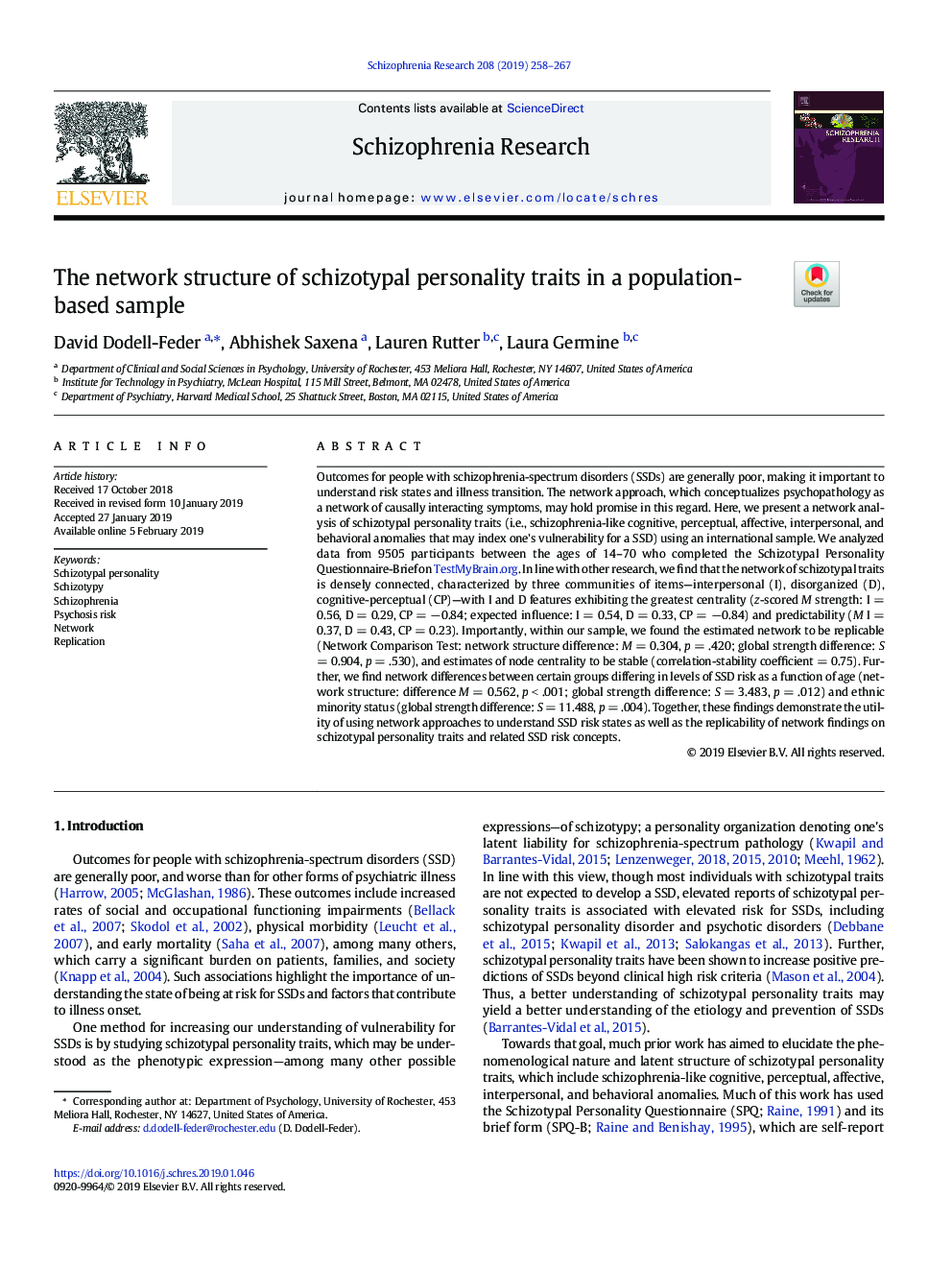| Article ID | Journal | Published Year | Pages | File Type |
|---|---|---|---|---|
| 13426357 | Schizophrenia Research | 2019 | 10 Pages |
Abstract
Outcomes for people with schizophrenia-spectrum disorders (SSDs) are generally poor, making it important to understand risk states and illness transition. The network approach, which conceptualizes psychopathology as a network of causally interacting symptoms, may hold promise in this regard. Here, we present a network analysis of schizotypal personality traits (i.e., schizophrenia-like cognitive, perceptual, affective, interpersonal, and behavioral anomalies that may index one's vulnerability for a SSD) using an international sample. We analyzed data from 9505 participants between the ages of 14-70 who completed the Schizotypal Personality Questionnaire-Brief on TestMyBrain.org. In line with other research, we find that the network of schizotypal traits is densely connected, characterized by three communities of items-interpersonal (I), disorganized (D), cognitive-perceptual (CP)-with I and D features exhibiting the greatest centrality (z-scored M strength: Iâ¯=â¯0.56, Dâ¯=â¯0.29, CPâ¯=â¯â0.84; expected influence: Iâ¯=â¯0.54, Dâ¯=â¯0.33, CPâ¯=â¯â0.84) and predictability (M Iâ¯=â¯0.37, Dâ¯=â¯0.43, CPâ¯=â¯0.23). Importantly, within our sample, we found the estimated network to be replicable (Network Comparison Test: network structure difference: Mâ¯=â¯0.304, pâ¯=â¯.420; global strength difference: Sâ¯=â¯0.904, pâ¯=â¯.530), and estimates of node centrality to be stable (correlation-stability coefficientâ¯=â¯0.75). Further, we find network differences between certain groups differing in levels of SSD risk as a function of age (network structure: difference Mâ¯=â¯0.562, pâ¯<â¯.001; global strength difference: Sâ¯=â¯3.483, pâ¯=â¯.012) and ethnic minority status (global strength difference: Sâ¯=â¯11.488, pâ¯=â¯.004). Together, these findings demonstrate the utility of using network approaches to understand SSD risk states as well as the replicability of network findings on schizotypal personality traits and related SSD risk concepts.
Related Topics
Life Sciences
Neuroscience
Behavioral Neuroscience
Authors
David Dodell-Feder, Abhishek Saxena, Lauren Rutter, Laura Germine,
